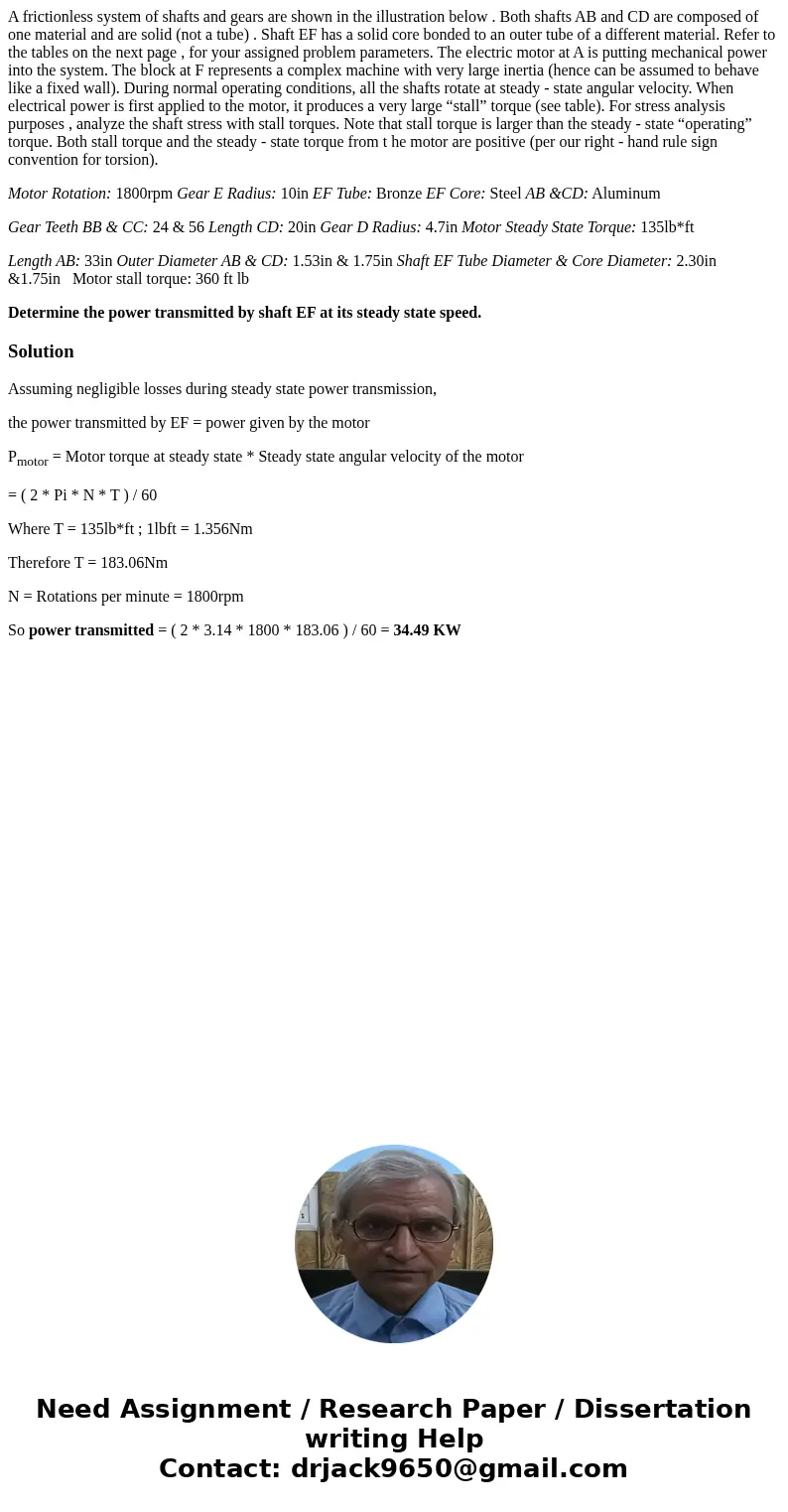A frictionless system of shafts and gears are shown in the i
A frictionless system of shafts and gears are shown in the illustration below . Both shafts AB and CD are composed of one material and are solid (not a tube) . Shaft EF has a solid core bonded to an outer tube of a different material. Refer to the tables on the next page , for your assigned problem parameters. The electric motor at A is putting mechanical power into the system. The block at F represents a complex machine with very large inertia (hence can be assumed to behave like a fixed wall). During normal operating conditions, all the shafts rotate at steady - state angular velocity. When electrical power is first applied to the motor, it produces a very large “stall” torque (see table). For stress analysis purposes , analyze the shaft stress with stall torques. Note that stall torque is larger than the steady - state “operating” torque. Both stall torque and the steady - state torque from t he motor are positive (per our right - hand rule sign convention for torsion).
Motor Rotation: 1800rpm Gear E Radius: 10in EF Tube: Bronze EF Core: Steel AB &CD: Aluminum
Gear Teeth BB & CC: 24 & 56 Length CD: 20in Gear D Radius: 4.7in Motor Steady State Torque: 135lb*ft
Length AB: 33in Outer Diameter AB & CD: 1.53in & 1.75in Shaft EF Tube Diameter & Core Diameter: 2.30in &1.75in Motor stall torque: 360 ft lb
Determine the power transmitted by shaft EF at its steady state speed.
Solution
Assuming negligible losses during steady state power transmission,
the power transmitted by EF = power given by the motor
Pmotor = Motor torque at steady state * Steady state angular velocity of the motor
= ( 2 * Pi * N * T ) / 60
Where T = 135lb*ft ; 1lbft = 1.356Nm
Therefore T = 183.06Nm
N = Rotations per minute = 1800rpm
So power transmitted = ( 2 * 3.14 * 1800 * 183.06 ) / 60 = 34.49 KW

 Homework Sourse
Homework Sourse